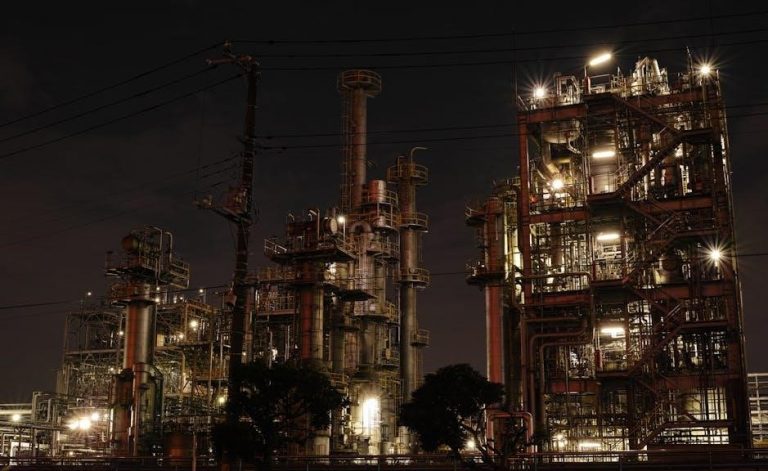Gas Laws Worksheet PDF with Answers: A Comprehensive Plan
Dive into comprehensive gas laws practice! This resource offers detailed PDF worksheets, complete with solutions, covering Boyle’s, Charles’s, and the Ideal Gas Law –
perfect for mastering chemistry concepts and excelling on upcoming tests, alongside NHL standings updates.
Gas laws describe the behavior of gases, relating pressure (P), volume (V), temperature (T), and the number of moles (n). These laws are fundamental in chemistry and physics, providing a framework for understanding and predicting gas behavior under various conditions.
Understanding these principles is crucial for numerous applications, from predicting weather patterns to designing efficient engines.
This exploration begins with foundational concepts, preparing you to tackle complex problems. We’ll delve into the historical context of these laws, recognizing the contributions of scientists like Boyle, Charles, and Gay-Lussac.
Furthermore, we’ll connect these theoretical principles to real-world scenarios, like the 2025-26 NHL season standings, illustrating their practical relevance.
The accompanying worksheet PDF provides ample practice opportunities, solidifying your grasp of these essential concepts.
Boyle’s Law: Pressure and Volume Relationship
Boyle’s Law states that for a fixed amount of gas kept at a constant temperature, pressure and volume are inversely proportional. This means as pressure increases, volume decreases, and vice versa. Mathematically, this is expressed as P₁V₁ = P₂V₂.
This relationship arises from the constant kinetic energy of gas molecules; compressing the gas increases collisions with the container walls, thus raising pressure.
The accompanying worksheet PDF offers targeted practice problems designed to reinforce your understanding of Boyle’s Law. These problems will challenge you to apply the formula in various scenarios, including calculating changes in volume given pressure alterations.
Think of a basketball – squeezing it (decreasing volume) increases the pressure inside. Mastering Boyle’s Law is essential, much like tracking the 2025-26 NHL standings!
Boyle’s Law Practice Problems
Sharpen your skills with our dedicated Boyle’s Law practice problems! The worksheet PDF provides a series of carefully crafted exercises, ranging in difficulty, to solidify your grasp of the P₁V₁ = P₂V₂ formula. You’ll encounter scenarios involving gas compression, expansion, and changes in pressure, requiring you to isolate and solve for unknown variables.
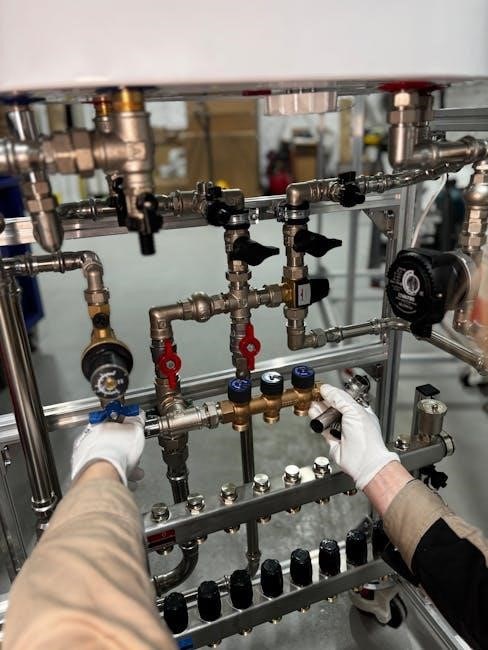
Expect problems asking you to calculate the final volume of a gas when the pressure is increased, or to determine the initial pressure given a change in volume. Detailed solutions are included to guide your learning and highlight common pitfalls.
Remember to pay close attention to units! Just as staying updated on NHL standings requires attention to detail, so does mastering these calculations. Practice makes perfect – and prepares you for more complex gas law applications.
Applications of Boyle’s Law
Beyond the formula, Boyle’s Law manifests in numerous real-world applications! Our worksheet PDF doesn’t just present calculations; it connects the theory to practical scenarios. Explore how this law explains the function of a syringe – decreasing volume increases pressure, injecting fluid. Understand why scuba divers need to exhale while ascending, preventing lung overexpansion as pressure decreases.
Consider the operation of internal combustion engines, where compressing air-fuel mixtures is crucial for efficient combustion. The worksheet illustrates these examples, prompting you to apply Boyle’s Law to analyze these systems. Just as tracking NHL standings reveals team performance, applying Boyle’s Law reveals gas behavior. These applications demonstrate the power of understanding fundamental scientific principles and their impact on everyday technology.
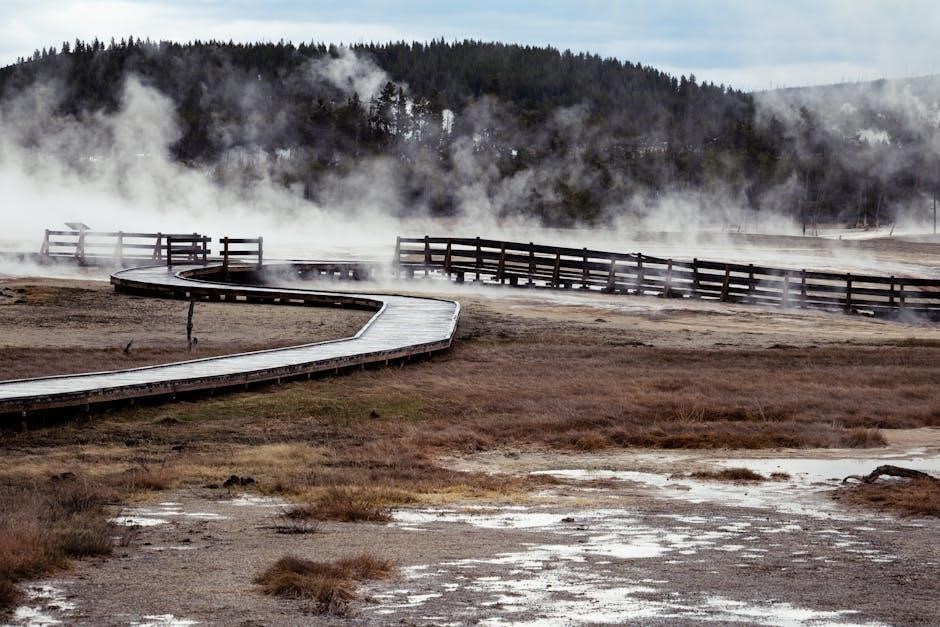
Charles’s Law: Volume and Temperature Relationship
Delve into the direct proportionality between a gas’s volume and its absolute temperature – that’s Charles’s Law! Our worksheet PDF meticulously explains this relationship, emphasizing the importance of using Kelvin for temperature measurements. As temperature increases, volume expands, and vice versa, assuming constant pressure.
Visualize this with a balloon: heating it causes expansion, while cooling leads to contraction. The worksheet provides clear examples, like calculating the new volume of a gas when heated, mirroring the precision of tracking NHL standings. Practice problems reinforce this concept, building your confidence in applying Charles’s Law. Understanding this law is crucial for predicting gas behavior in various scenarios, from weather patterns to hot air balloons.
Charles’s Law Calculation Examples
Let’s solidify Charles’s Law with practical examples! Our worksheet PDF presents step-by-step solutions to common calculation problems. For instance, if a 5.0 L gas sample at 27°C (300 K) is heated to 77°C (350 K) at constant pressure, what’s the new volume?
The solution demonstrates applying the formula V1/T1 = V2/T2, resulting in a new volume of approximately 5.83 L. Another example involves converting Celsius to Kelvin before applying the law – a critical step! These examples, akin to analyzing NHL team records, build analytical skills. Further problems explore scenarios with varying initial conditions, ensuring a thorough understanding. Mastering these calculations is key to predicting gas behavior and achieving success in chemistry.
Real-World Applications of Charles’s Law
Charles’s Law isn’t just theoretical; it’s everywhere! Consider hot air balloons – heating the air inside increases its volume, decreasing density and causing lift, much like tracking NHL standings reveals team performance. Our worksheet PDF highlights this, alongside other applications.
Another example is the inflation of car tires. As tires warm up from driving, the air inside expands, potentially increasing pressure. Understanding this prevents overinflation. Similarly, the expansion of gases in internal combustion engines relies on Charles’s Law. The provided examples demonstrate how temperature changes affect gas volume in everyday scenarios. These applications, mirroring the dynamic nature of hockey seasons, emphasize the law’s practical relevance. Mastering these connections solidifies comprehension and showcases the power of gas laws.
Gay-Lussac’s Law: Pressure and Temperature Relationship
Gay-Lussac’s Law establishes a direct correlation: as the temperature of a gas increases, its pressure also increases, assuming volume remains constant. Think of a sealed aerosol can exposed to heat – the pressure builds, potentially leading to an explosion. Our worksheet PDF provides practice problems mirroring this concept, similar to analyzing NHL standings to predict playoff contenders.

This law is crucial in understanding systems like pressure cookers, where increased temperature elevates pressure, speeding up cooking times. It also explains why tire pressure increases on a hot day. The included examples within the PDF demonstrate these principles, offering a clear understanding of the relationship. Solving these problems, much like following a hockey season, requires careful attention to detail and unit conversions. Mastering Gay-Lussac’s Law is essential for advanced chemistry concepts.
Gay-Lussac’s Law Problem Solving
Our worksheet PDF excels in practical application! It presents a series of Gay-Lussac’s Law problems, demanding students to calculate unknown pressures or temperatures. These aren’t just abstract equations; they mirror real-world scenarios, much like predicting NHL team performance based on stats. For example, a problem might ask: “If a gas has a pressure of 150 kPa at 25°C, what will its pressure be if the temperature is increased to 50°C?”
The key is remembering the formula: P1/T1 = P2/T2. Crucially, temperature must be in Kelvin. The PDF provides step-by-step solutions, demonstrating how to rearrange the formula and perform the calculations. We also include problems involving different units, reinforcing conversion skills. Like analyzing hockey standings, consistent practice is vital for success. These problems build confidence and solidify understanding of this fundamental gas law.
Combined Gas Law: Integrating Pressure, Volume, and Temperature
The worksheet PDF’s combined gas law section is a cornerstone! It tackles scenarios where pressure, volume, and temperature all change simultaneously – a more complex, yet realistic, application of gas behavior. Think of it like predicting an NHL team’s success, factoring in player stats, coaching changes, and home-ice advantage. The formula, P1V1/T1 = P2V2/T2, is presented with clear explanations.
Problems within the PDF progressively increase in difficulty. Students learn to identify initial and final states, rearrange the formula to isolate the unknown variable, and meticulously manage units (always Kelvin for temperature!). Detailed solutions are provided, showcasing each step. We emphasize the importance of careful organization and dimensional analysis. Mastering this law is crucial for advanced chemistry concepts, just as understanding complex stats is vital for hockey analysis.
Combined Gas Law Worked Examples
Our PDF worksheet excels with detailed, step-by-step worked examples for the combined gas law! These aren’t just answers; they’re learning pathways. Imagine analyzing NHL playoff scenarios – you don’t just see the outcome, you understand why a team advanced. Each example begins with a clearly stated problem, followed by the identification of knowns and unknowns.
We demonstrate the correct rearrangement of the P1V1/T1 = P2V2/T2 formula, emphasizing unit conversions (especially Celsius to Kelvin). Solutions show every calculation, including the final answer with appropriate significant figures. Furthermore, we include ‘check your work’ sections, prompting students to verify their results. These examples build confidence and solidify understanding, preparing students for any combined gas law challenge, much like a hockey team prepares for a championship series.
Ideal Gas Law: PV = nRT
The Ideal Gas Law, PV = nRT, is a cornerstone of chemistry, and our worksheet provides focused practice! Like tracking NHL standings, understanding this equation unlocks a deeper comprehension of gas behavior. We begin with a clear explanation of each variable: Pressure (P), Volume (V), number of moles (n), the Ideal Gas Constant (R), and Temperature (T).
Our PDF worksheet doesn’t just present the formula; it guides students through identifying the appropriate values for each variable in various scenarios. We emphasize the crucial importance of using consistent units – a common source of errors. Practice problems range in difficulty, starting with straightforward calculations and progressing to more complex applications. Detailed solutions are provided, mirroring the detailed analysis found in sports reporting, ensuring students grasp the underlying principles.
Ideal Gas Law Constant (R) and Units
Mastering the Ideal Gas Constant (R) is vital for accurate calculations! Our worksheet emphasizes that ‘R’ isn’t a single value, but rather a constant dependent on the units used for pressure, volume, and temperature – much like tracking different stats in NHL standings. We provide a comprehensive table listing common values of R, including 0.0821 L⋅atm/mol⋅K, 8.314 J/mol⋅K, and 62.36 L⋅Torr/mol⋅K.
The worksheet includes dedicated practice problems focused solely on selecting the correct ‘R’ value based on the given units. Students learn to convert units before applying the Ideal Gas Law, preventing errors. Detailed explanations accompany each solution, clarifying the reasoning behind unit conversions. This section reinforces the importance of dimensional analysis, a skill crucial for success in chemistry, just as strategic analysis is key in hockey.

Ideal Gas Law Practice Problems with Solutions
Sharpen your skills with our extensive Ideal Gas Law practice problems! This section of the worksheet presents a diverse range of scenarios – from calculating the number of moles of a gas to determining pressure or volume – mirroring the varied game situations in NHL standings. Each problem is meticulously crafted to test your understanding of PV=nRT.

Detailed, step-by-step solutions are provided for every problem, ensuring you grasp the correct methodology. We emphasize unit consistency and proper application of the Ideal Gas Constant (R). The worksheet also includes challenging problems requiring unit conversions, preparing you for complex real-world applications. Like analyzing hockey stats, careful attention to detail is paramount.
Practice makes perfect, and this section provides ample opportunity to master the Ideal Gas Law!
Gas Law Conversions: Temperature and Pressure
Mastering gas law calculations requires proficiency in unit conversions! This section of the worksheet focuses on converting between common temperature scales – Celsius, Kelvin – and pressure units – atmospheres (atm), kilopascals (kPa), millimeters of mercury (mmHg). Accurate conversions are crucial, much like tracking NHL team records.

We provide clear examples and practice problems demonstrating how to convert Celsius to Kelvin (K = °C + 273) and between various pressure units using established conversion factors. Understanding these conversions is vital for applying gas laws correctly. The worksheet emphasizes the importance of using appropriate units in the Ideal Gas Law (PV=nRT).
Detailed solutions are included to guide you through each conversion, ensuring you build a solid foundation for more complex gas law problems.
Converting Celsius to Kelvin
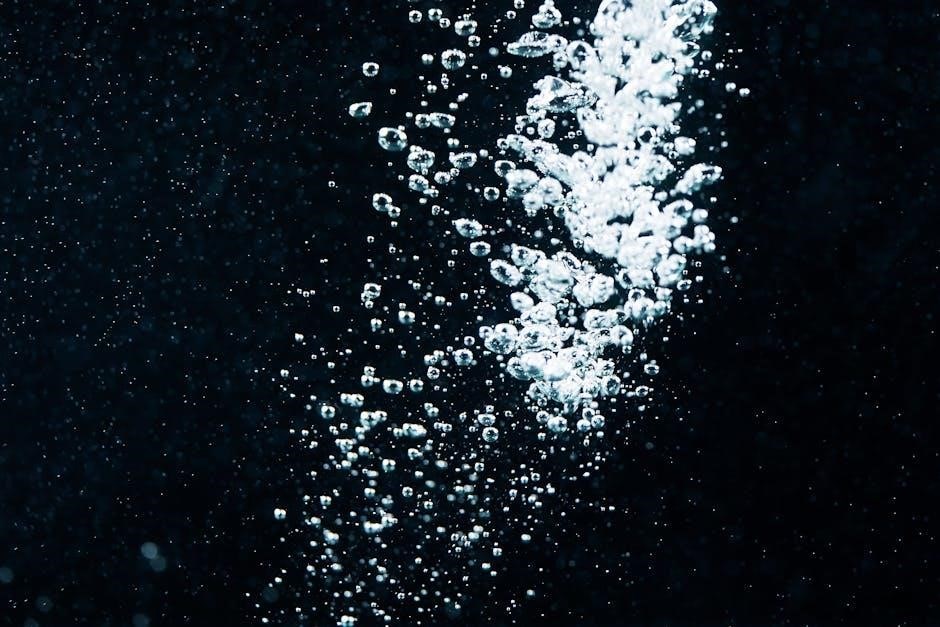
The Kelvin scale is essential for gas law calculations! Unlike Celsius and Fahrenheit, Kelvin has an absolute zero point, making it ideal for representing temperature in scientific contexts. This section of the worksheet provides focused practice on converting temperatures from Celsius (°C) to Kelvin (K).
The conversion formula is simple: K = °C + 273. We offer numerous practice problems, ranging in difficulty, to solidify your understanding of this fundamental conversion. Just as tracking NHL standings requires consistent updates, mastering this conversion is key to accurate gas law applications.
Step-by-step solutions are provided for each problem, demonstrating the correct application of the formula and highlighting common mistakes to avoid. This ensures you develop a strong grasp of Celsius-to-Kelvin conversions.

Converting Pressure Units (atm, kPa, mmHg)
Gas laws often require pressure to be in specific units! This section of the worksheet focuses on converting between atmospheres (atm), kilopascals (kPa), and millimeters of mercury (mmHg) – common pressure units encountered in chemistry. Accurate conversions are crucial for solving gas law problems correctly, much like tracking precise NHL standings.
We provide conversion factors and practice problems to help you become proficient in these unit conversions. Understanding these relationships is vital for consistent and accurate calculations. The worksheet includes a variety of problems, increasing in complexity, to challenge your skills.
Detailed solutions are included, demonstrating each conversion step and explaining the reasoning behind it. This ensures you not only get the right answer but also understand why it’s correct.
Dalton’s Law of Partial Pressures
Understanding gas mixtures is key! Dalton’s Law states that the total pressure of a gas mixture is the sum of the partial pressures of each individual gas. This section of the worksheet provides practice calculating these partial pressures, mirroring the detailed analysis found in NHL standings.
We’ll guide you through problems involving multiple gases in a container, requiring you to determine the contribution of each gas to the total pressure. The worksheet includes examples with varying complexities, building your confidence step-by-step.
Detailed solutions are provided, clearly illustrating how to apply Dalton’s Law and calculate partial pressures accurately. This ensures a solid grasp of the concept and its application in real-world scenarios.
Calculating Partial Pressures
Mastering partial pressure calculations is crucial! This section of the worksheet focuses on applying Dalton’s Law to solve practical problems. You’ll encounter scenarios involving gas collections over water, requiring you to account for the vapor pressure of water – much like tracking team performance in NHL standings.
Practice problems include determining the partial pressure of a specific gas within a mixture, given the total pressure and the partial pressures of other gases. We’ll also explore scenarios where you need to calculate the total pressure from individual partial pressures.
Step-by-step solutions are provided for each problem, demonstrating the correct application of formulas and units. This ensures you develop a strong understanding of the concepts and can confidently tackle similar problems independently.
Graham’s Law of Effusion and Diffusion
Explore the relationship between gas density and effusion rates! This section delves into Graham’s Law, explaining how lighter gases effuse and diffuse faster than heavier gases – a concept as dynamic as the changing NHL standings.
Worksheet problems focus on calculating the relative rates of effusion for different gases, given their molar masses. You’ll also practice determining the molar mass of an unknown gas based on its effusion rate compared to a known gas.
Detailed solutions guide you through each step, emphasizing the importance of using consistent units and understanding the inverse square root relationship. This builds a solid foundation for predicting gas behavior in various applications.
Rate of Effusion Calculations
Mastering the mathematical application of Graham’s Law is key! This section provides a series of practice problems specifically designed to hone your skills in calculating effusion rates, mirroring the precision needed to follow NHL team records.
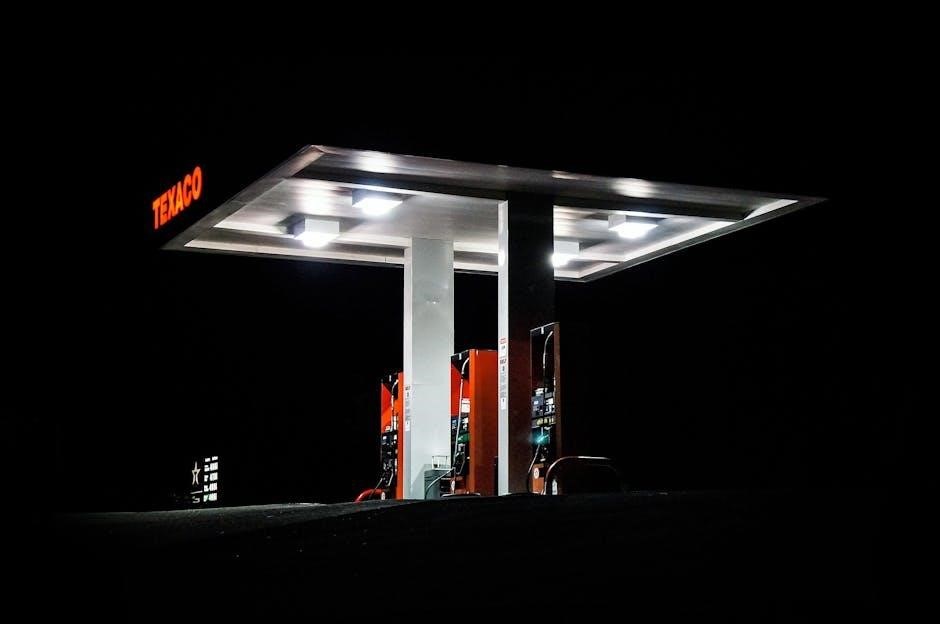
Worksheet exercises involve comparing the rates of effusion for different gases under identical conditions. You’ll learn to apply the formula: Rate1/Rate2 = √(M2/M1), where M represents molar mass.
Step-by-step solutions are included, demonstrating how to correctly identify the given variables, perform the calculations, and interpret the results. These examples reinforce the concept and build confidence in your problem-solving abilities.
